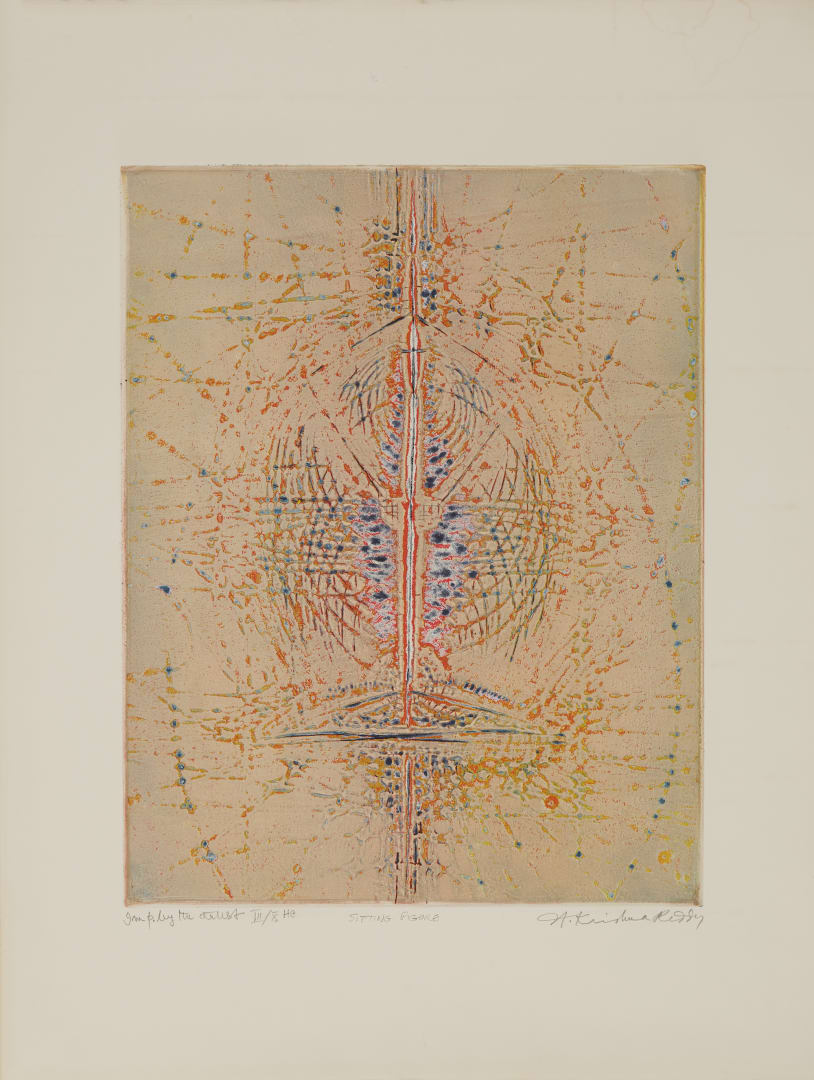Krishna Reddy (1925 - 2018) consistently experimented with form, technique and application. Initially trained in Tagore’s Santiniketan under the tutelage of the influential Ramkinkar Baij, Reddy moved to London in 1949 studying sculpture at Slade School of Fine Art in Henry Moore’s class. Thereafter he spent over two decades in Paris, first at the studio of Ossip Zadkine and then eventually co-directing Stanley William Hayter’s Atelier 17, which was at the time (1960s), a thriving hub for stalwarts like Joan Miro, Constantin Brancusi, Pablo Picasso, and Alberto Giacometti, with all of whom he closely worked. At Atelier 17, he developed and invented the process that he is most well-known for – simultaneous multicolour viscosity printing and broke new ground in intaglio printmaking.
In collaboration with Hayter, Reddy developed a new technique in multi-colour printing by utilizing variable viscosities of the printing inks. He was able to control the viscosity of the inks by altering the oil consistency in each impression, thereby allowing the inks to occupy different depths without mixing with each other, a process never done before. Using a range of rollers, he pushed the inks to desired parts of the plate, making spectacular unique mono-prints, rich in their textural quality and dimensionality. Reddy constantly pushed the boundaries that were not only confined to the formal process of printmaking but a revolutionary way of thinking on how to develop a new form.
Through the 1960s Reddy travelled the world giving lectures and conducting workshops. After the Paris demonstrations of 1968, he began to spend more time in the US and finally moved to New York in 1976 as Director of Graphics & Printmaking in New York University and went on to teach until retirement dedicating his practice to pedagogy. Reddy’s practice found sanctuary in experimentation with printmaking and sculpture in a lifelong pursuit to understand form.
